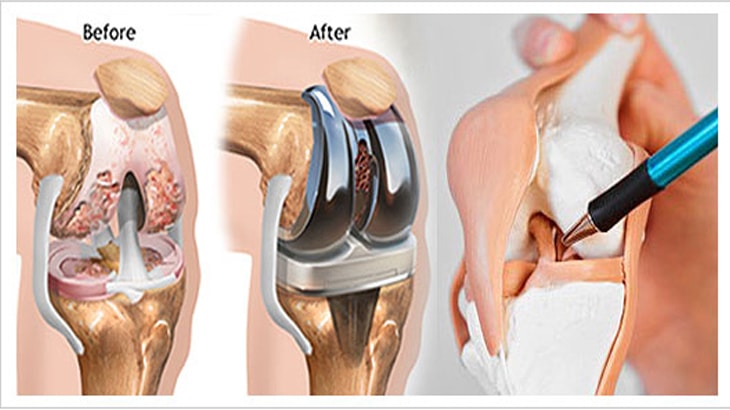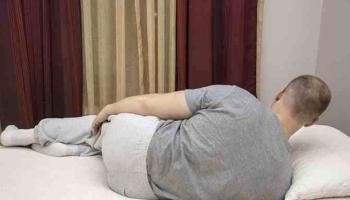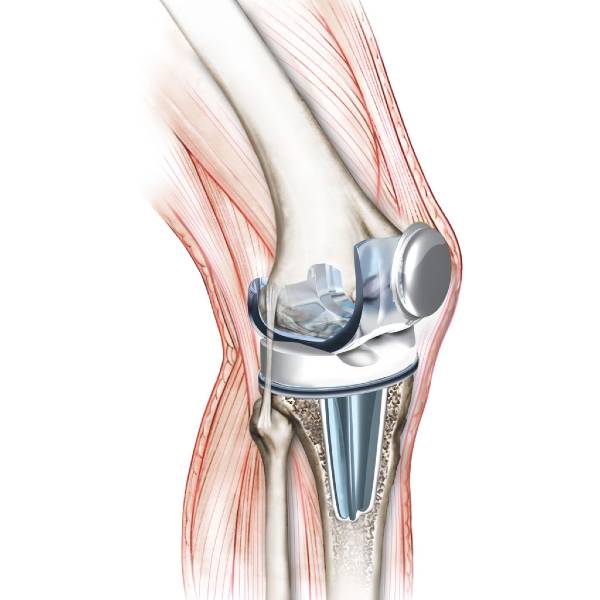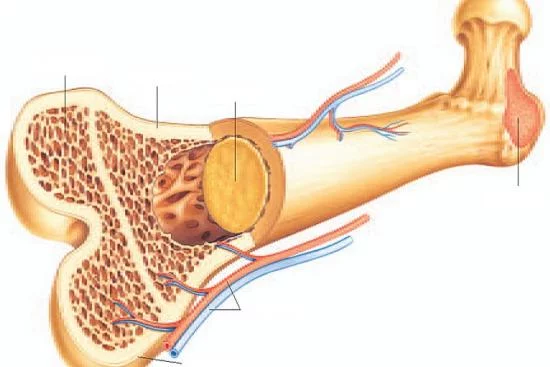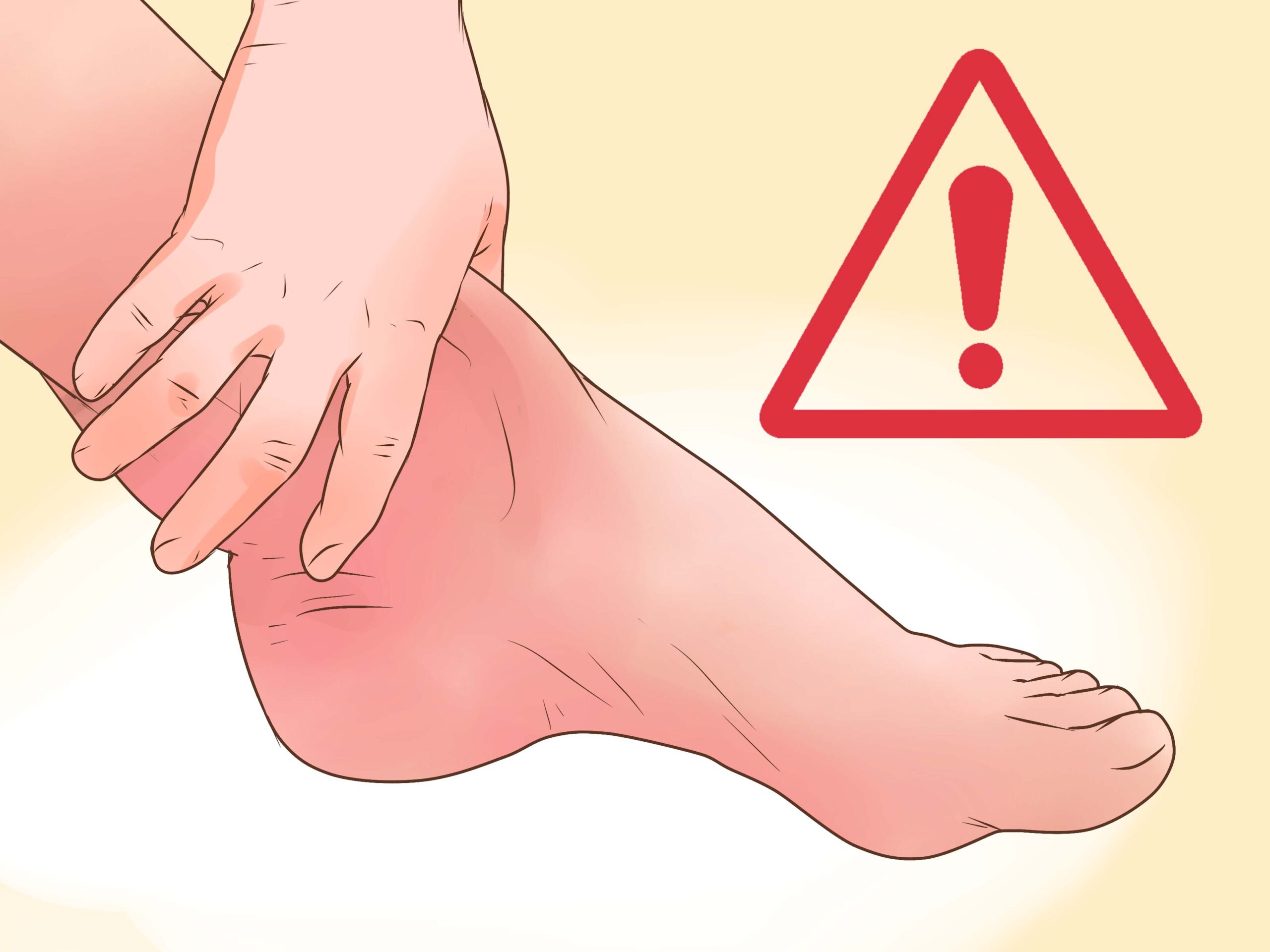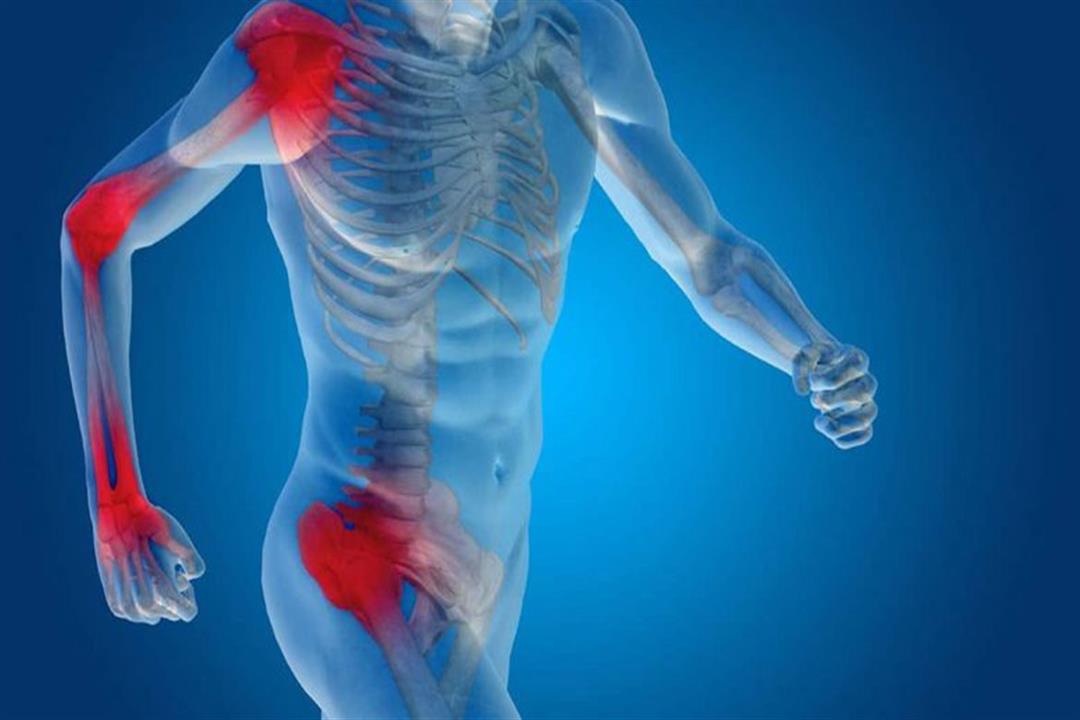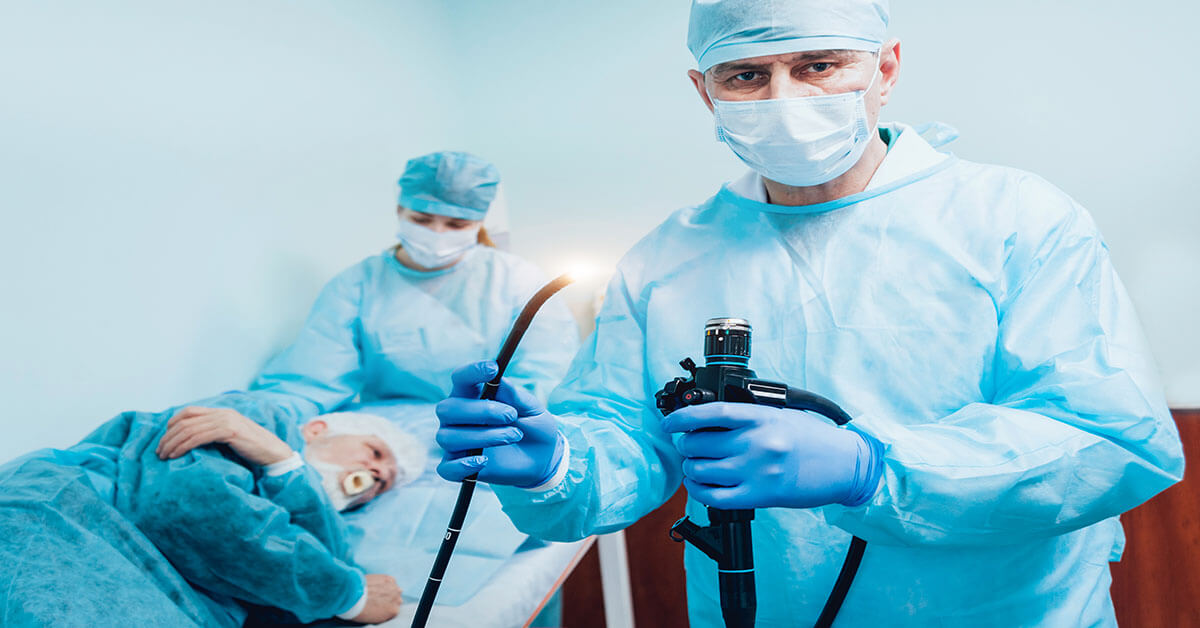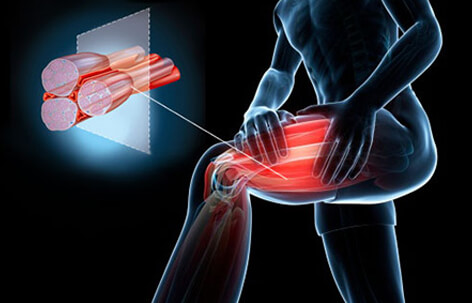Learn more about the shoulder tendon resection
The shoulder tendons are the tissues that connect the bones, allowing greater movement for the person to use the arm, elbow, and hand as well, this part may rupture or be completely cut, and we will learn in the following what the cuts and operations are for.
Shoulder tendon resection
The shoulder tendons are one of the important parts of the body, which represent the basis for the movement of the shoulder naturally and connect between the humerus bone and the last part of the shoulder. Its main task is to link the shoulder cavity and the humerus, and partial or complete cutting of the shoulder tendons is a common injury that includes many causes.
Causes and risk factors for shoulder tendon rupture
A person can suffer from a severed shoulder tendon for more than one reason, including:
- The shoulder hit hard as he stared at the synergy between the two players.
- The presence of weakness in the shoulder tendons as a result of advancing age.
- The person makes a sudden movement with the arms and shoulder.
- History of shoulder injuries in the patient’s family.
- A person’s job may affect his injuries, especially if he is an athlete.
Symptoms of shoulder tendon rupture
There is more than one symptom that appears on the injured shoulder tendon, including the following:
- Shoulder pain appears and lasts for a while, and its intensity increases with time.
- The person may suffer from insomnia and the inability to use the shoulder during sleep.
- Difficulty doing simple activities such as hairdressing.
- A feeling of weakness and pain in the arm when moving it in any direction.
Cases that require a shoulder tendon cut
There are types of treatments used in cases of rupture or cutting of the shoulder tendon, but there are some cases that require surgical intervention, including:
- A person feels pain that lasts for more than six months without responding to other types of treatment.
- The cut caused a partial or total impediment to the movement of the shoulder and severe pain.
- Shoulder weakness affects a person’s movement and daily activities.
- Some injuries result from playing sports.
- The person’s profession can influence the decision to have the surgery because they may be mainly using the arm and shoulder.
How to perform shoulder tendon repair surgery
The doctor can perform an endoscopic shoulder tendon resection or an open surgery, and this is due to his assessment of the condition and the extent to which the shoulder bones and tendons are affected, so the anesthesia may be partial or complete, and the patient needs a period of rest, whether before or after the surgery.
Doctors usually use small screws, some of which are made of special metal and other soluble materials, so that the tendons are connected again and fixed well to the bones, and the wound is sterilized and sutured in cases of open surgery.
Does shoulder tendon cutting need surgery?
The patient may need to operate to repair the shoulder tendon pieces in more than one case, including causing severe pain that the person cannot bear and the presence of a crisis in the person’s movement or living his life normally, also, the doctor may favor the operation of the shoulder tendon for the elderly due to the presence of some deposits of calcium and bumps that are on the bone.
Mostly, the doctor follows some precautionary measures before the decision of the operation, including reducing the burden on the shoulder and raising it up for a period with the use of analgesic drugs that help the person bear the pain and adhere to rest during the treatment period, the doctor can also use shock waves that improve the condition of the injured shoulder.
Arthroscopic shoulder tendon resection
Recently, surgeons preferred endoscopy, which is the use of binoculars in surgery, because it is safer and does not cause large wounds in the body, and also does not leave a significant impact after the operation, and the feeling of pain can be less severe than open surgeries.
Steps before arthroscopic shoulder tendon resection
Normally, the specialist requires some procedures before the surgery takes place, as follows:
- The doctor begins by requesting laboratory tests to ensure that the patient’s condition allows the operation, especially if he is an elderly person.
- Blood tests, a comprehensive chest examination, and an electrocardiogram (ECG) are performed so that the decision is safe for the patient.
- The surgeon may recommend that you stop taking certain medications if you suffer from other illnesses in the preoperative period.
- The patient is required to take an X-ray and use an MRI to ascertain the condition of the joints and other ligaments in the shoulder.
- The decision to operate is taken after confirming all the examinations, and there is coordination between the surgeon, the anesthesia staff, and the patient before the operation.
Steps for arthroscopic shoulder tendon resection
Shoulder tendon repair is performed arthroscopically because it has great advantages that the patient benefits from, and the surgery is performed as follows:
- An arthroscopy is used in the process of cutting the shoulder tendon, which is several artificial fibers.
- Drill 2 to 3 holes in the shoulder about half an inch long at the joint.
- The endoscope is inserted through one of the holes, and at the end, there is a camera and a light, so that the doctor examines the condition of the cartilage and ligaments in detail.
- The surgeon begins by applying a sterile saline solution, which helps him clarify the cut in the tendon.
- Then the doctor uses other surgical tools from the corresponding hole to repair it.
- The doctor begins after completing the sterilization of the joint and performs the necessary work at the end of the surgery.
Steps after arthroscopic shoulder tendon resection
The instructions that the doctor prescribes to you after the operation is no less important than the steps before the operation or the surgery itself because they contribute to the success rate of the operation and the time in which the person recovers, and the procedures followed after the surgery are:
- The doctor begins to follow the developments of the shoulder in the post-operative period and gives the patient medications that suit his condition, which are mostly analgesics and anti-inflammatory drugs.
- After shoulder surgery, it is important that the patient use a continuous passive motion machine (CPM), which reduces pain, improves passive movement, and reduces inflammation.
- Rehabilitation and physiotherapy programs after performing operations on the tendons is essential because they work to strengthen the muscles and improve the performance of the tendon and can continue for a period of 6 to 9 months.
- If you are an athlete, you can return to sports practice under medical supervision after 18 to 36 months, depending on the body’s response to physical therapy and rehabilitation.
Features of arthroscopic shoulder tendon resection
There is more than one feature that makes the doctor prefer to perform laparoscopic operations, and certainly, all the advantages serve the patient in the first place, as follows:
- The wounds resulting from the endoscopic shoulder tendon resection are small, exceeding 10 inches, and this reduces the possibility of infection and also reduces the pain caused by open wounds.
- Accurate tools are used that make the surgeon more invasive and achieve high efficiency in performing operations.
- In the endoscope, there is a camera and a light source that will clarify the vision more of the internal parts of the joint, which helps in achieving a higher success rate for the surgery.
- The person can recover and recover in a shorter time than open operations.
How long does shoulder tendon resection surgery take?
The shoulder tendon-cutting operation can last for about 60 to 90 minutes, after which the patient is transferred to the recovery room. After the operation, doctors make sure that the injured arm is raised so that the recovery is faster and healed properly.
Many doctors confirmed that starting treatment early and performing shoulder tendon-cutting operations in the early stages may help increase the success rate of surgery and reduce complications that can occur to the tendon and muscles in the shoulder.
The physiotherapy journey usually begins in the first week after the operation, and it greatly helps the person recover in a short period, increases muscle strength, and also preserves the rest of the tendons in the shoulder.
What after the process of repairing the shoulder tendons?
Doctors usually give some advice and recommendations that are important to follow, especially in the two days following the operation, for the recovery to be faster and prevent you from complications after the shoulder tendon repair operation, and the recovery stage can reach 6 months, and the patient uses a special sling for a month, and the patient uses a special sling for a month and a half that helps stabilize the joint so that the injured tendon does not move.
Post-operative advice for shoulder tendon repair
- Using cold water and ice compresses, especially in the first week after surgery, helps reduce swelling in the joint.
- Increasing the amount of rest for the person and avoiding violent movements in the first periods after the operation is very important, as well as getting more hours of sleep.
- Sitting in a slightly inclined position gives more comfort to the injured person, and placing pillows under the shoulder and arm makes him feel comfortable.
- Reducing the loads a person carries, especially in the first three weeks.
- You should stop using mobile phones or computers in order not to cause muscle strain.
- Walking a few days after surgery is important and improves a person’s psychological condition and also helps reduce the risk of clots or pneumonia.
- Paying attention to the diet is one of the valuable pieces of advice that doctors give to the patient, and your meal should be rich in fiber and proteins and increase the percentage of liquid to help wounds heal.
- Taking care of personal hygiene and cleaning and sterilizing the wound is important to keep the injured person away from a bacterial infection that harms the wound.
Medical procedures after shoulder tendon repair
- It is important in the first weeks that the attending physician prescribes appropriate medications, including pain relievers and non-steroidal anti-inflammatory drugs (NSAIDs), but they must be taken under medical supervision.
- Starting physical therapy and preparing an integrated rehabilitation program in the post-operative period helps in restoring shoulder efficiency faster.
When does physical therapy begin after shoulder surgery?
Physiotherapy is of great and fundamental importance in shoulder surgeries because it helps the patient to return to his normal state in a shorter time and works to support the tendons by increasing muscle strength, improving joint performance, and certainly reducing the stiffness that may affect the individual after surgery.
Physiotherapy begins about 14 days (two weeks), and the person usually performs simple and non-stressful exercises aimed at improving muscle performance and reducing stiffness in the arm. In the six weeks following the operation, the physiotherapist gradually increases the intensity of the exercises.
Physiotherapy after the operation to cut the shoulder tendon begins two days after the surgery and is at a regular rate of about 3 or 4 times a week, depending on the plan that was developed in the rehabilitation program for the patient, in which he exercises some exercises that begin in intensity from simple to strong gradually.
Shoulder tendon-cutting exercises
Exercises can be performed after the shoulder tendon amputation operation, and they help improve shoulder movement, soften the tendons, and reduce the risk of joint stiffness, which usually starts simple and increases in severity over time, the exercises must be under complete medical supervision to ensure better results.
Post-operative shoulder exercises
- Pendulum exercise
The person begins by bending the body forward at an angle of 90 degrees, rests with the healthy hand on a chair, and the other hand dangles freely, and then the affected arm is moved in small circles without pressing it too much in a clockwise and reverse direction.
- Forward shoulder raise exercise
The injured person stands up straight and raises the arm without bending it upward while keeping the palm straight for 10 seconds, the exercise can be repeated 5 to 10 times, and it is recommended to use a mirror when doing it.
- Shoulder abduction
The exercise begins by standing straight and raising the injured arm sideways without bending the elbow and bringing the palm down, and it is repeated three times for 10 seconds.
Is the shoulder tendon cut healed?
There are two types of shoulder tendon cuts, which are partial or complete, and they usually cause pain for a long period of up to 6 months or more, and the cut can heal the part of the shoulder tendon, but it lasts for a period that may reach a year, but the patient will recover after that.
There are more than one treatment method for the partial resection of the shoulder tendon, both surgical and non-surgical, and doctors usually follow some conservative measures with the patient before the operation is decided, and the instructions that doctors follow are as follows:
- At first, the doctor performs x-rays and necessary examinations for the patient to ensure the health of the joint and the extent to which other tendons are affected.
- The doctor usually begins by prescribing painkillers to reduce pain and swelling and starting conservative treatment.
- It is recommended to start physical therapy and an integrated rehabilitation program during the treatment period to maintain muscle and joint health.
- Work to provide more rest time for the injured so that he can recover early.
Doctors usually prefer non-surgical treatment of partial shoulder tendon resection unless it causes any disability or health problems related to the shoulder joint or causes difficulty in movement.
What is the treatment for a tendon rupture in the shoulder?
Shoulder tendon rupture is the occurrence of an injury to the tissues that make up the tendon, and it may be partially ruptured or up to a complete cut, depending on the pressure that the shoulder was exposed to as a result of a collision or accident that the person suffered from recently, there is more than one way that doctors follow to treat the shoulder tendon rupture, and the symptoms of the rupture begin to appear several hours after the injury.
Causes of tendon rupture in the shoulder
There can be more than one cause of a shoulder tendon rupture, including:
- Sudden movements of players.
- Strong cohesion and usually happens to sports practitioners.
- Aging, which causes weakness in the tendon.
- The shoulder bones move from their place as a result of dislocation or slipping.
Methods for treating shoulder tendon cuts
It is recommended that the injured person return as soon as possible to a specialist doctor in order for the condition to be well diagnosed and the treatment journey to begin early, which helps the person to recover faster, and we explain more than one method that doctors follow in shoulder tendon rupture injuries:
Shoulder tendon cut treatment without surgery
Treatment without surgery or conservative treatment can help treat a rupture without resorting to operations, and it is worked on through several steps:
- Avoid violent activities or activities that strain the muscles and tendons of the shoulder.
- Pay attention to physical rehabilitation and simple exercise in the initial period of treatment.
- Use ice packs for 20 minutes to reduce pain and swelling in the joint.
- The doctor gives the injured some drugs that help reduce symptoms and reduce swelling.
Treatment of cut shoulder tendon herbal
Herbs and natural materials can contribute to the treatment and relief of shoulder tendon pain as long as the cut is partial (rupture), including the following:
- Apple cider vinegar
Apple cider vinegar when taken with a glass of water or using drops of it in the bathtub helps to treat any joint inflammation that increases shoulder pain.
- Olive oil
It is recommended by alternative medicine doctors because it works to improve blood circulation in the affected part and helps to get rid of the effects of inflammation and also reduces the pain associated with the partial cut.
- Black sesame seeds
These seeds can treat swelling and swelling of the joints because they contain anti-inflammatory substances, including magnesium, copper, zinc, and others, and it is used soaked in a glass of water.
- Lavender
Other than its distinctive smell, lavender works mainly to relax muscles and get rid of pain, similar to the effect of local analgesics on the affected area, and a few drops of it can be used in the bathtub.
Doctors prefer to work on non-surgical types of treatment as long as the cut in the tendon is partial and does not cause any problems in the movement of the shoulder or somehow affect the joint itself or the cartilage in it.
Complications of a shoulder tendon cut
- Some people wonder about what are the complications of cutting the shoulder tendon, it can be explained that neglecting the treatment of cutting the shoulder tendon causes other health problems, and recovery from it after it is more difficult than before.
- Shoulder tendon cutting can affect the arm and its strength and limit its range of motion. Although the shoulder bones are the most mobile in the body, shoulder injuries that are neglected in treatment may reduce the movement of the shoulder or hinder it in severe cases.
- The cut also affects the joint and the cartilage at the ends of the shoulder bones, and atrophy occurs in the tissues inside the affected part, resulting in pain that painkillers may not work with.
Is ruptured shoulder tendons dangerous?
Certainly, rupture of the shoulder tendons is considered dangerous if the person is late in referring to a specialist doctor and does not start the stage of treatment, whether surgical or non-surgical, early, which causes him great complications, including loss of the ability to move the shoulder, chronic pain, and narrowing of the entire range of arm movement.


